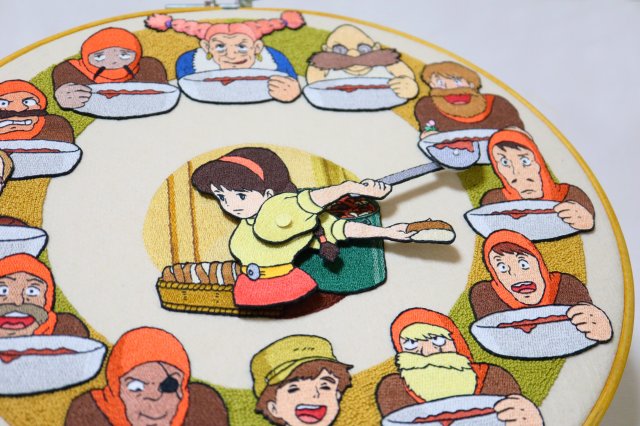
Anime fan’s year-long embroidery project gets a magical ending.
Studio Ghibli is famous for its old-school ways, preferring hand-drawn animation techniques over computer generated ones. The process requires a lot more time and effort, but the hand-crafted touch creates a warmth and beauty that gives Ghibli movies their unique charm.
Someone else who knows about the charm of creating things by hand is Japanese embroiderer and Twitter user Wsyow (@wsyow_washi), who makes beautiful designs inspired by manga and anime.
One of their latest works isn’t just an embroidered piece of cloth — it’s an embroidered cloth that functions like a clock, and it’s been inspired by Ghibli’s 1986 anime film, Laputa: Castle in the Sky.
▼ Check out the beautiful creation in action below!
ラピュタ 無限おかわり時計
— ウショウ@モノグサ刺繍 (@wsyow_washi) March 2, 2022
やっと完成しました!
シータがドーラ一家のみんな(+部外者1名)に24時間無休でシチューを盛り続けます🔥#刺繍 #天空の城ラピュタ
↓その他詳細 リプに続きます pic.twitter.com/iSk83DQfWy
As you can see, the clock is inspired by the scene from the movie where protagonist Sheeta serves stew to the crew on Dola’s airship and it’s so good they all ask for seconds.
Image: Studio Ghibli
Seconds is exactly what the crew is getting with this clock — in both senses of the word — and it happens over and over again, as Sheeta rotates her ladle of stew amongst the characters on the dial, all while holding out a piece of bread for them as well.
▼ The creator has dubbed it the Laputa Infinite Refill Clock, as Sheeta serves up refills nonstop, 24 hours a day, 7 days a week.
Enjoying Sheeta’s stew with the crew members are a couple of noticeable guests, namely Pazu…
▼ …and Colonel Muska.
Sheeta’s double-jointed serving skills are only upstaged by the incredible way the ladle manages to stay upright all around the clock, and it’s all thanks to the creator’s cleverly thought-out design.
These beautifully embroidered pieces form the centrepiece of the dial, and the way the hands are positioned give the action a good sense of realism in all directions, which is no easy feat in a circular design like this one.
Wsyow says they used a 35-centimetre (13.8-inch) embroidery frame for the project, and it took them a whole year to complete.
▼ The detailed work in each piece is incredible.
The thought behind the project is also evident in the placement of characters around the dial. Key characters of Pazu, Muska, Dola, and Dola’s eldest son, Louis, occupy the 6, 9, 12 and 3 o’clock positions respectively.
▼ Plus, check out Muska’s bowl — no stew for you, Muska!
Like many creators, Wsyow is quick to critique their own work, pointing out its “many problems” like “the balance between the long hand and the short hand, and the movement of the ladle is unstable”.
People online were quick to disagree, sending the tweet viral with over 104,000 likes and 1.4 million views as of this writing, while leaving comments like:
“This is absolutely amazing — genius-level work!”
“Too incredible – I have no words!”
“The angle of the ladle is so impressive!”
“I had no idea you could make embroidery look like a clock!”
“I love that you included Muska in this, and with no food too!”
“Such a fantastic concept, executed with brilliant skill!”
Ghibli fans and embroidery enthusiasts weren’t the only ones to be impressed by Wsyow’s talents, because three days after the tweet was posted online, Studio Ghibli appeared in the comments section, with a sweet message for the creator.
▼ The tweet from Studio Ghibli shows Sheeta saying “ありがとう” (“thank you”).
It’s always a big moment when senpai notices you, but when it’s the globally lauded Studio Ghibli thanking you for your fan art, well, that’s a moment that nobody can prepare themselves for. Wsyow was understandably surprised and thrilled at the acknowledgment, replying with:
“Wowowowowow!!! Thank you!!! Studio Ghibli staff saw this, I’m too happy 😭🙏✨✨ Thank you very much!!!”
Studio Ghibli rarely acknowledges fan art so publicly, but it’s not every day you see fan art like this. As a longtime proponent of old-school handiwork, though, Studio Ghibli, and its director Hayao Miyazaki, know the time and dedication that goes into making things the old-fashioned way.
It’s one of the reasons why this project stood out for the studio and got the recognition it so rightly deserves. And it’s also one of the reasons why we’re still waiting to see Miyazaki’s upcoming film How Will You Live?, two years after its original 2020 deadline.
Source: Twitter/@wsyow_washi via Net Lab
Featured image: Twitter/@wsyow_washi
Insert images: Twitter/@wsyow_washi (1, 2, 3) unless otherwise stated
● Want to hear about SoraNews24’s latest articles as soon as they’re published? Follow us on Facebook and Twitter!

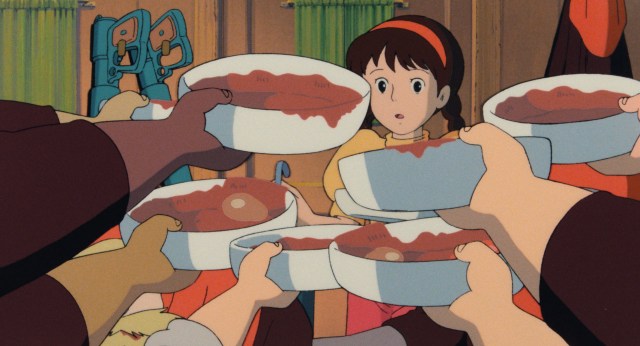
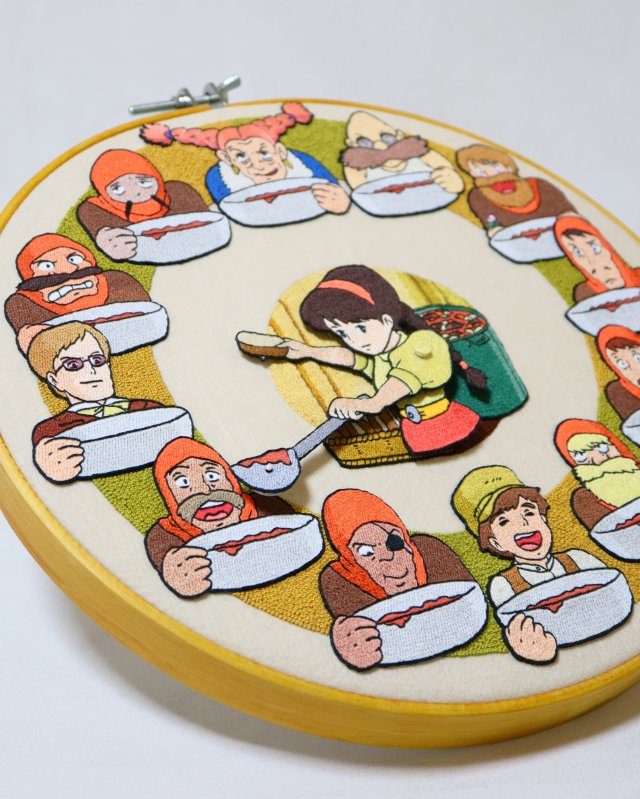
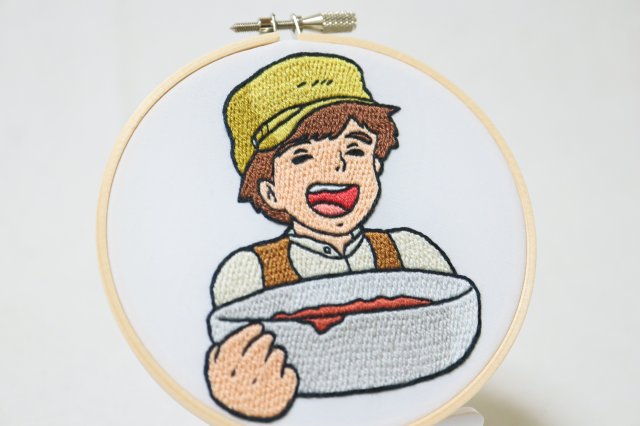
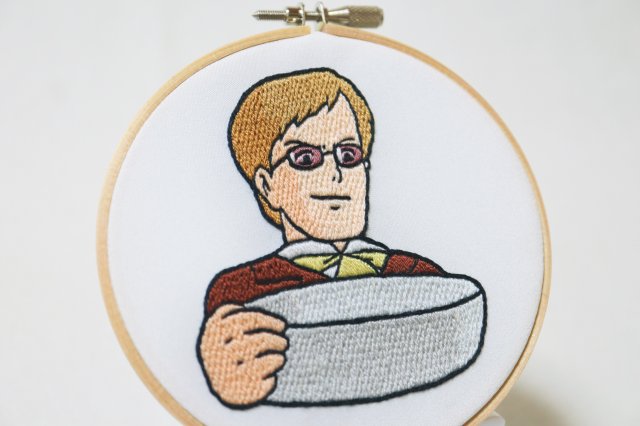
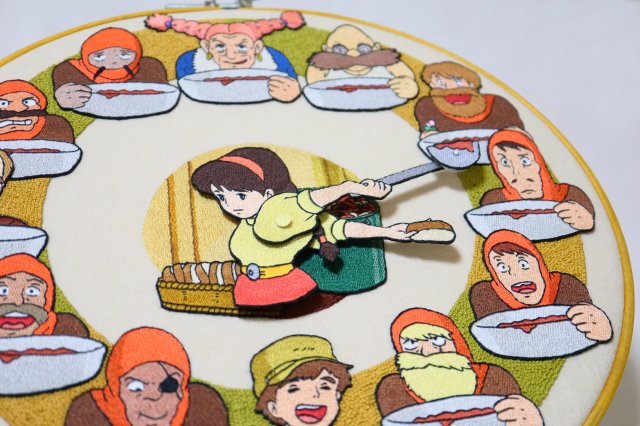
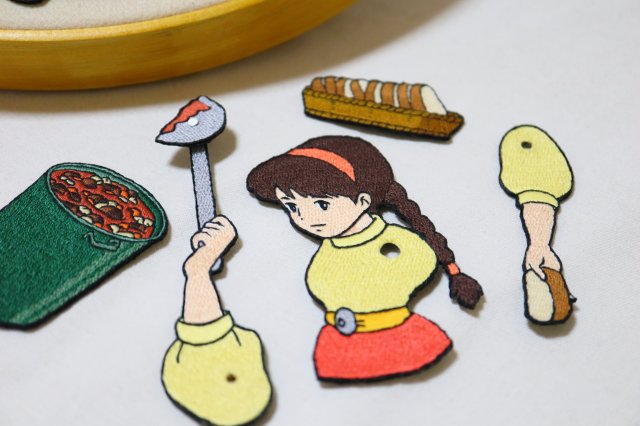
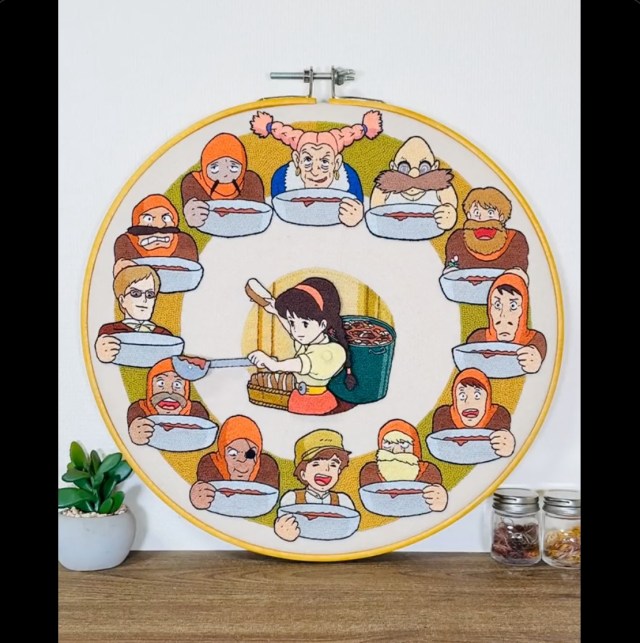
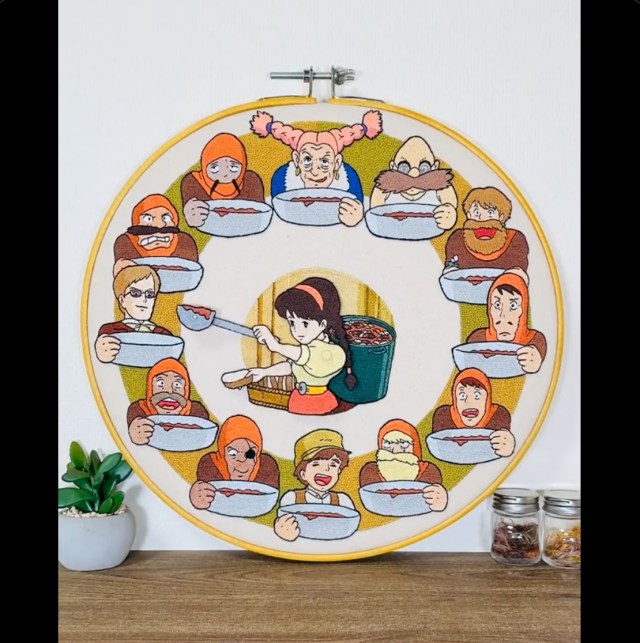
 Ghibli releases free-to-use artwork from Castle in the Sky Laputa, comes with standard disclaimer
Ghibli releases free-to-use artwork from Castle in the Sky Laputa, comes with standard disclaimer Studio Ghibli loungewear lets you cosplay as an anime heroine at home
Studio Ghibli loungewear lets you cosplay as an anime heroine at home Studio Ghibli’s first anime heroine (no, not Nausicaa) gets an awesome new figure【Photos】
Studio Ghibli’s first anime heroine (no, not Nausicaa) gets an awesome new figure【Photos】 We make anime food from Studio Ghibli movie Laputa: Castle in the Sky
We make anime food from Studio Ghibli movie Laputa: Castle in the Sky Japanese ramen restaurants under pressure from new yen banknotes
Japanese ramen restaurants under pressure from new yen banknotes New private rooms on Tokaido Shinkansen change the way we travel from Tokyo to Kyoto
New private rooms on Tokaido Shinkansen change the way we travel from Tokyo to Kyoto McDonald’s new Happy Meals offer up cute and practical Sanrio lifestyle goods
McDonald’s new Happy Meals offer up cute and practical Sanrio lifestyle goods We tried Korea’s way-too-big King Tonkatsu Burger at Lotteria 【Taste Test】
We tried Korea’s way-too-big King Tonkatsu Burger at Lotteria 【Taste Test】 French Fries Bread in Tokyo’s Shibuya becomes a hit on social media
French Fries Bread in Tokyo’s Shibuya becomes a hit on social media Studio Ghibli releases new action figures featuring Nausicaä of the Valley of the Wind characters
Studio Ghibli releases new action figures featuring Nausicaä of the Valley of the Wind characters Secret Kitchen bento serves Japanese flowers, birds, wind and moon in a box, but is it worth it?
Secret Kitchen bento serves Japanese flowers, birds, wind and moon in a box, but is it worth it? A trip to hell on Japan’s ‘vomit ship’: Is it as bad as everyone says it is?
A trip to hell on Japan’s ‘vomit ship’: Is it as bad as everyone says it is? Haku is…Chihiro’s dead brother? Studio Ghibli fans blown away by Spirited Away theory
Haku is…Chihiro’s dead brother? Studio Ghibli fans blown away by Spirited Away theory All-you-can-drink Starbucks and amazing views part of Tokyo’s new 170 meter-high sky lounge
All-you-can-drink Starbucks and amazing views part of Tokyo’s new 170 meter-high sky lounge More foreign tourists than ever before in history visited Japan last month
More foreign tourists than ever before in history visited Japan last month Starbucks reopens at Shibuya Scramble Crossing with new look and design concept
Starbucks reopens at Shibuya Scramble Crossing with new look and design concept Studio Ghibli glasses cases let anime characters keep an eye on your spectacles
Studio Ghibli glasses cases let anime characters keep an eye on your spectacles Is the new Shinkansen Train Desk ticket worth it?
Is the new Shinkansen Train Desk ticket worth it? Beautiful Ghibli sealing wax kits let you create accessories and elegant letter decorations【Pics】
Beautiful Ghibli sealing wax kits let you create accessories and elegant letter decorations【Pics】 Studio Ghibli releases Kiki’s Delivery Service chocolate cake pouches in Japan
Studio Ghibli releases Kiki’s Delivery Service chocolate cake pouches in Japan New definition of “Japanese whiskey” goes into effect to prevent fakes from fooling overseas buyers
New definition of “Japanese whiskey” goes into effect to prevent fakes from fooling overseas buyers Our Japanese reporter visits Costco in the U.S., finds super American and very Japanese things
Our Japanese reporter visits Costco in the U.S., finds super American and very Japanese things Studio Ghibli unveils Mother’s Day gift set that captures the love in My Neighbour Totoro
Studio Ghibli unveils Mother’s Day gift set that captures the love in My Neighbour Totoro Domino’s Japan now sells…pizza ears?
Domino’s Japan now sells…pizza ears? New Japanese KitKat flavour stars Sanrio characters, including Hello Kitty
New Japanese KitKat flavour stars Sanrio characters, including Hello Kitty New Pokémon cakes let you eat your way through Pikachu and all the Eevee evolutions
New Pokémon cakes let you eat your way through Pikachu and all the Eevee evolutions Sales of Japan’s most convenient train ticket/shopping payment cards suspended indefinitely
Sales of Japan’s most convenient train ticket/shopping payment cards suspended indefinitely Sold-out Studio Ghibli desktop humidifiers are back so Totoro can help you through the dry season
Sold-out Studio Ghibli desktop humidifiers are back so Totoro can help you through the dry season Japanese government to make first change to romanization spelling rules since the 1950s
Japanese government to make first change to romanization spelling rules since the 1950s Ghibli founders Toshio Suzuki and Hayao Miyazaki contribute to Japanese whisky Totoro label design
Ghibli founders Toshio Suzuki and Hayao Miyazaki contribute to Japanese whisky Totoro label design Doraemon found buried at sea as scene from 1993 anime becomes real life【Photos】
Doraemon found buried at sea as scene from 1993 anime becomes real life【Photos】 Tokyo’s most famous Starbucks is closed
Tokyo’s most famous Starbucks is closed One Piece characters’ nationalities revealed, but fans have mixed opinions
One Piece characters’ nationalities revealed, but fans have mixed opinions We asked a Uniqlo employee what four things we should buy and their suggestions didn’t disappoint
We asked a Uniqlo employee what four things we should buy and their suggestions didn’t disappoint Princesses, fruits, and blacksmiths: Study reveals the 30 most unusual family names in Japan
Princesses, fruits, and blacksmiths: Study reveals the 30 most unusual family names in Japan Special Ghibli menu to be served at cafe attached to Tokyo art exhibit for fabled anime studio
Special Ghibli menu to be served at cafe attached to Tokyo art exhibit for fabled anime studio His name is Balse and he looks like Colonel Muska: Japanese netizens go wild for new French PM
His name is Balse and he looks like Colonel Muska: Japanese netizens go wild for new French PM Those awesome voice-activated Laputa pendants that just hit stores? They’re already sold out
Those awesome voice-activated Laputa pendants that just hit stores? They’re already sold out Fill your home with the scent of Studio Ghibli
Fill your home with the scent of Studio Ghibli Ghibli Park: Opening date, first photos, and a new promo video produced by Studio Ghibli!
Ghibli Park: Opening date, first photos, and a new promo video produced by Studio Ghibli! Ghibli embroidered patches/brooches let you wear your love of Ghibli anime/food on your sleeve
Ghibli embroidered patches/brooches let you wear your love of Ghibli anime/food on your sleeve The secret behind this mysterious Studio Ghibli x Pixar image
The secret behind this mysterious Studio Ghibli x Pixar image Studio Ghibli is partnering with Star Wars’ Lucasfilm, it looks like
Studio Ghibli is partnering with Star Wars’ Lucasfilm, it looks like Japanese restaurant chain now serving perfect recreations of Studio Ghibli food【Photos】
Japanese restaurant chain now serving perfect recreations of Studio Ghibli food【Photos】 Studio Ghibli reveals mystery hidden on coat of arms and outdoor signs at Ghibli Museum
Studio Ghibli reveals mystery hidden on coat of arms and outdoor signs at Ghibli Museum It’s Ghibli merchandise galore at the Donguri Kyowakoku pop-up shop in Shibuya!
It’s Ghibli merchandise galore at the Donguri Kyowakoku pop-up shop in Shibuya! Studio Ghibli announces release date for Hayao Miyazaki’s new anime movie, releases key art
Studio Ghibli announces release date for Hayao Miyazaki’s new anime movie, releases key art Totoro wants to be your ears’ neighbor with adorable embroidered Ghibli earrings
Totoro wants to be your ears’ neighbor with adorable embroidered Ghibli earrings Studio Ghibli releases watercolour greeting card collection featuring artwork from anime movies
Studio Ghibli releases watercolour greeting card collection featuring artwork from anime movies New Laputa amulet actually responds when you incant the anime’s magic spells
New Laputa amulet actually responds when you incant the anime’s magic spells
Leave a Reply